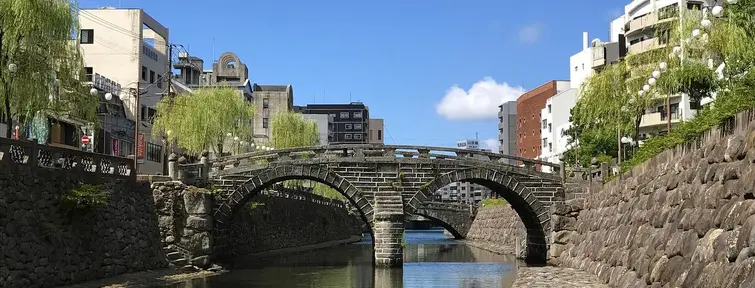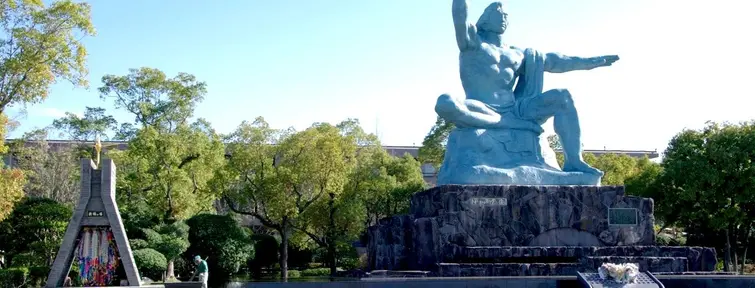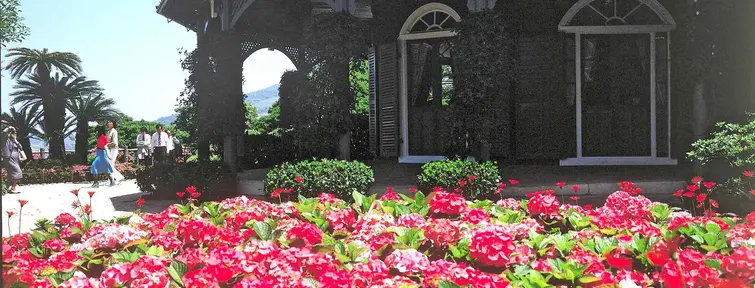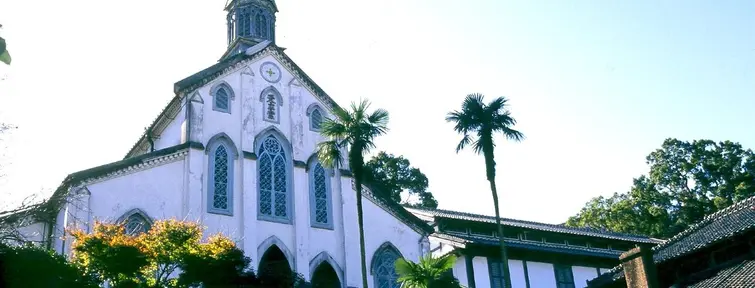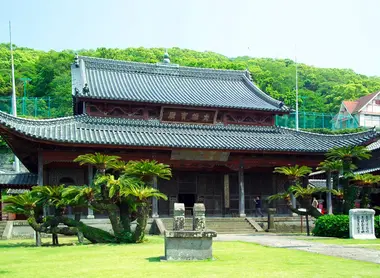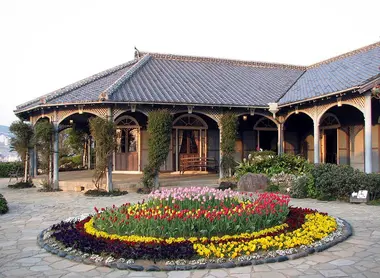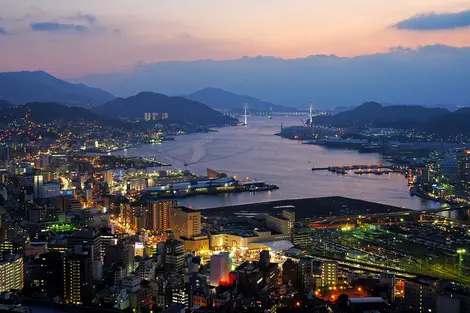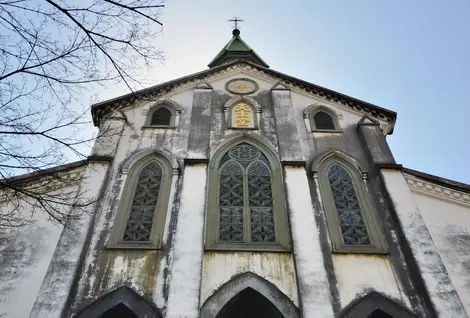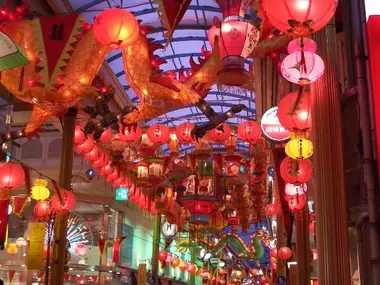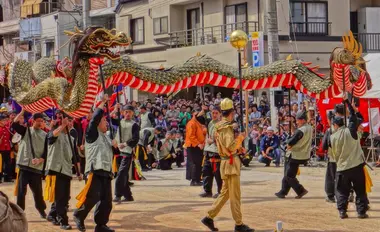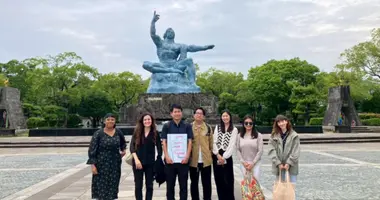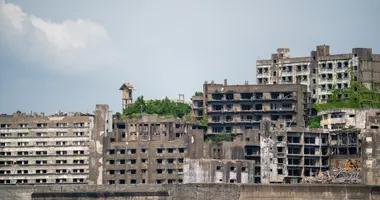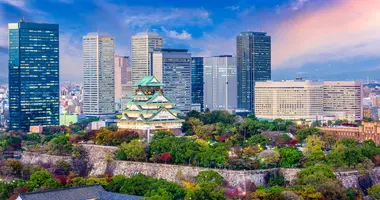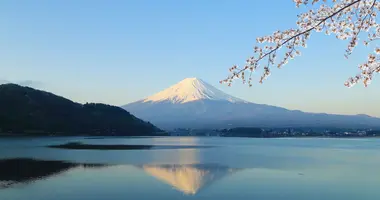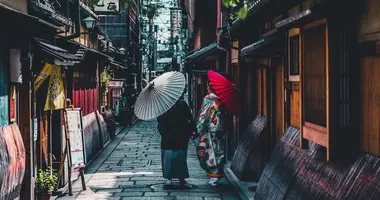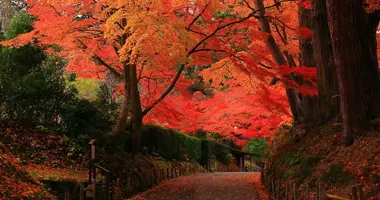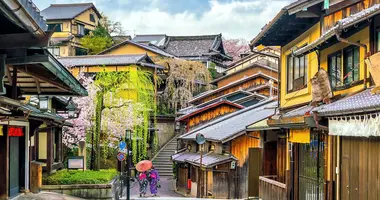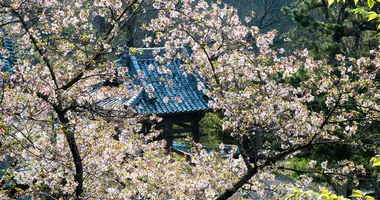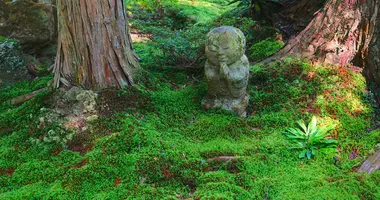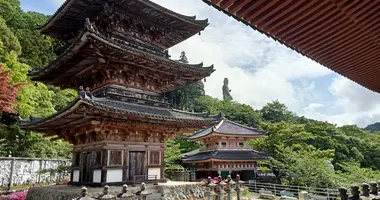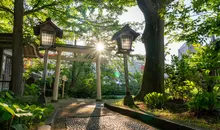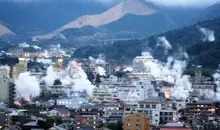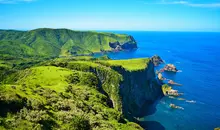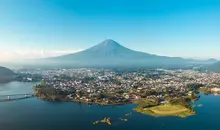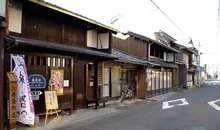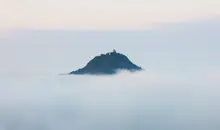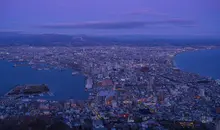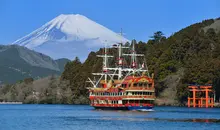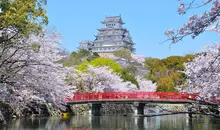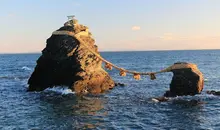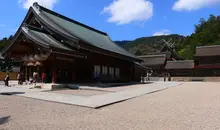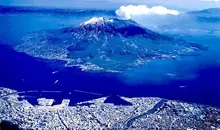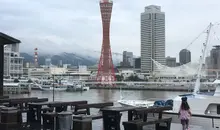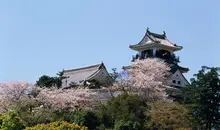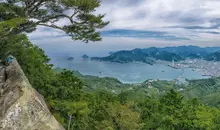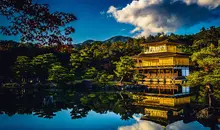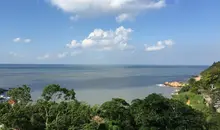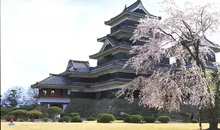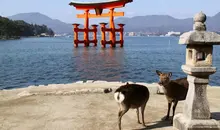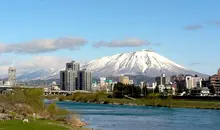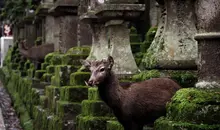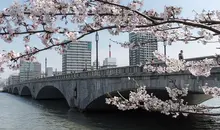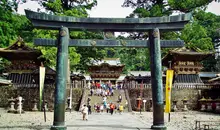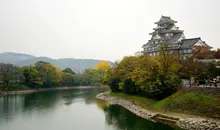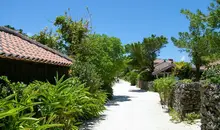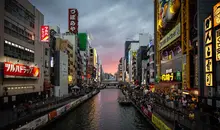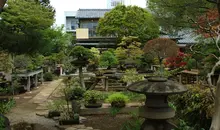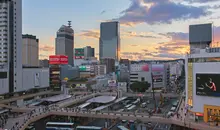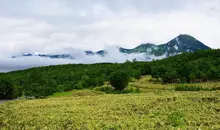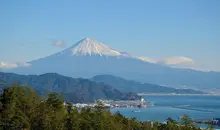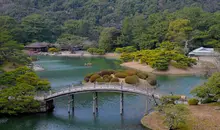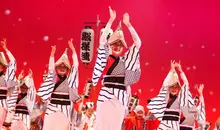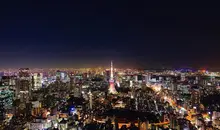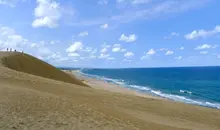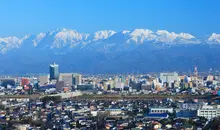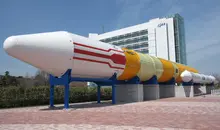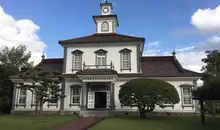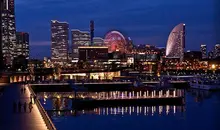Nagasaki
- Published on : 24/02/2020
- by : G.L. / J.R.
- Youtube
Local Time 06:06
Symbol : cloudy
Temp : 14.4°C
Date : Today
Symbol : sunny_cloudy
Temp : 11.3°C
Date : Tomorrow
Symbol : sunny_cloudy
Temp : 6.5°C
Date : Wednesday
Symbol : sunny
Temp : 5.1°C
Date : Thursday
Local Time 06:06
Symbol : cloudy
Temp : 14.4°C
Date : Today
Symbol : sunny_cloudy
Temp : 11.3°C
Date : Tomorrow
Symbol : sunny_cloudy
Temp : 6.5°C
Date : Wednesday
Symbol : sunny
Temp : 5.1°C
Date : Thursday
Nagasaki, a port city with international influences
Nagasaki is much more than a city marked by the tragedy of the 1945 atomic bomb. This port city on the island of Kyushu in southwest Japan offers a fascinating blend of history, culture and unique international influences. Perched between the sea and the mountains, Nagasaki's atypical architectural heritage, poignant memorial sites, cosmopolitan neighborhoods testifying to its historic role as a gateway to the world, and diverse gastronomy are sure to enchant you. Whether you're a history buff, a fan of spectacular panoramas or curious to discover a Japanese city with a distinctive character, Nagasaki is well worth a visit.
Understanding Nagasaki's unique history
Founded in the 15th century by the Portuguese, Nagasaki soon became an important port and point of trade and cultural exchange between Japan and Europe. It was during this period that Catholic missionaries arrived on the archipelago, converting some of the local population and building numerous churches, some of which still stand today. However, in 1614, Catholicism was outlawed when Shogun Ieyasu Tokugawa came to power, leading to persecution.
During theEdo period (1603-1868), Japan closed itself off from the outside world, adopting an isolationist policy known as "sakoku". Despite this closure, Nagasaki remained the country's only window on the West. Only Dutch merchants, based on the small artificial island of Dejima, were allowed to continue international trade with Japan. This unique position gave Nagasaki a special status and profoundly shaped its cultural identity.
With the advent of theMeiji era in 1868, Japan once again opened up to foreign trade. The ban on Catholicism was lifted in 1872, enabling the construction of Urakami Cathedral, which was to become the largest in East Asia. Nagasaki benefited from intensive trade with Europe and China, which explains the presence of numerous colonial-style monuments, Chinese temples and Confucian shrines in the city.
On August 9, 1945, Nagasaki suffered the tragic fate of being the second Japanese city to be hit by an American atomic bomb. At 11:02 a.m., the explosion hit the Urakami district, killing around 40,000 people immediately. Despite this catastrophe, the city has rebuilt itself to become a global symbol of peace and resilience, while preserving its unique multicultural heritage.
Explore atomic bomb memorial sites
Nagasaki Peace Park is the heart of the atomic bomb memorial sites. Established in 1955 near the hypocenter of the explosion, this park is home to the majestic Statue of Peace, the iconic work of sculptor Seibō Kitamura. Standing 10 metres high, this statue is loaded with symbolism: its right hand pointing skywards evokes the nuclear threat, while its outstretched left hand symbolizes eternal peace. Its face, with features both Western and Eastern, represents universal meditation and prayer for the victims.
Nearby is the Atomic Bomb Museum, a poignant but essential place for understanding this historic event. Inaugurated in 1996, the museum features personal objects from the victims, striking photographs and the moving testimonies of survivors, known as hibakusha. Exhibits detail the devastating effects of the bomb on the city and its inhabitants, while conveying a powerful message for world peace and nuclear disarmament.
Another important place of recollection is the National Peace Memorial for the victims of the atomic bomb, designed by architect Akira Kuryū. This underground memorial features a hall of remembrance illuminated by twelve pillars of light symbolizing hope, and a shelf containing the names of the victims. On its surface, a tree-lined circular pool is dotted with 70,000 fiber-optic points of light representing the victims, creating a moving spectacle at night.
Urakami Cathedral, almost totally destroyed by the atomic bomb, was rebuilt in 1959 near the Peace Park. Some remains of the old cathedral are preserved in the park, including the Angelus bell on display at the Atomic Bomb Museum. This site bears witness both to the destruction caused by the nuclear weapon and to Nagasaki's long Christian past.
Every year on August 9, a peace ceremony is held in front of the Statue of Peace, where the mayor of Nagasaki delivers a declaration for world peace. These memorial sites are not only places of remembrance, but also symbols of hope and reconciliation, making Nagasaki a global ambassador for peace.
Discover the cosmopolitan districts and international heritage
The artificial island of Dejima is a fascinating testimony to the history of relations between Japan and the West. Built in 1636 in the shape of a fan, this small island first welcomed Portuguese merchants before becoming, in 1641, the only Dutch trading post authorized in Japan during the period of isolation. Now rebuilt and restored, Dejima offers visitors a veritable open-air museum, with some twenty period buildings where you can discover how these first Western expatriates lived in Japan.
Nagasaki's Chinatown, one of the three oldest in Japan, reflects the Chinese cultural influence on the city. With its lively alleys adorned with colorful lanterns and authentic decorations, this lively district invites you to immerse yourself in Chinese culture. It's the ideal place to sample specialties such as champon and discover the Confucian shrine, a testimony to Sino-Japanese cultural exchanges.
Glover Garden and Minamiyamate Hill are home to some magnificent 19th-century colonial residences, including Glover House, built in 1863 for Scottish merchant Thomas Blake Glover. This historic site, now an open-air museum, bears witness to the Western influence on local architecture and offers a spectacular view of Nagasaki harbour. It is said to have inspired Puccini to write his opera "Madame Butterfly".
Oura Church, built in 1864 by French missionaries, is Japan's oldest Catholic church and a national treasure. This Gothic-style building, dedicated to the 26 Christian martyrs executed in Nagasaki in 1597, is one of the region's hidden Christian sites listed as a UNESCO World Heritage Site. Its presence testifies to the persistence of the Christian faith despite persecution during the period of isolation.
Along the Nakashima River, charming stone bridges such as the Meganebashi (Spectacle Bridge), built in the 17th century, offer a picturesque setting for a stroll. These bridges, whose reflections in the water evoke pairs of spectacles, are one of the city's symbols and link various historic districts, allowing visitors to appreciate Nagasaki's unique architecture, which harmoniously blends Japanese, Chinese and Western influences.
Admire the city's panoramic views and natural spaces
Mount Inasa, 333 meters above sea level, offers what many consider to be one of the three most beautiful night views in Japan. Accessible by cable car, funicular or, for the more athletic, on foot, the summit reveals a 360° panorama of the city, its port and the bay. On a clear day, you can see as far as the Goto Islands to the west, the Amakusa Islands to the south and Mount Unzen to the east. The circular, all-glass observatory allows you to admire this breathtaking view day and night, when the city lights create a fairy-tale spectacle dubbed "the $10 million night view".
The Glover Garden, located on a hill overlooking the bay, is a peaceful haven combining nature and history. This terraced garden, laid out around the former residence of Scottish merchant Thomas Blake Glover, is particularly popular in spring during the cherry blossom season and in autumn for its flamboyant colors. As you stroll along its carefully tended paths, you can admire exotic plants and enjoy spectacular views of Nagasaki harbor.
For those wishing to escape into the surrounding nature, the island of Iojima, just 30 minutes from Nagasaki, offers a rejuvenating experience with its sandy beaches and open-air onsen (hot springs). This small island is ideal for a day of relaxation, alternating bathing, lounging and relaxing hot springs overlooking the sea.
Further afield, Unzen National Park, dominated by Mount Unzen, offers hikers impressive volcanic landscapes and sulphurous hot springs. Well-developed hiking trails allow you to explore this unique natural environment, characterized by fumaroles and spectacular rock formations.
About an hour's boat ride from Nagasaki harbour, the abandoned island of Gunkanjima (Dreadnought Island) offers a fascinating post-apocalyptic landscape. Once the site of a thriving coal mine with one of the highest population densities in the world, the island was deserted in 1974. Now a UNESCO World Heritage Site, its dilapidated concrete buildings bear witness to a bygone era and make for an exceptional photographic site, accessible only on guided excursions from Nagasaki.
Savour the mixed gastronomy of Nagasaki
Champon, Nagasaki's culinary emblem, perfectly illustrates the mix of influences that characterizes local cuisine. This noodle dish, born in the Meiji era, was created by the Chinese restaurant Shikairō to offer an affordable and nutritious meal to local Chinese students. It consists of thick, chewy noodles served in a rich broth made from pork and chicken bones, topped with a generous assortment of seafood, pork and crunchy vegetables like cabbage and bean sprouts. Each bite tells the story of cultural exchange between China and Japan.
Another must-try speciality is sara udon, where crispy noodles are topped with an abundant filling similar to champon, topped with a thick, savoury sauce. This preparation offers an interesting contrast between the crispness of the noodles and the creaminess of the sauce, for a unique taste experience.
Castella pastry, introduced by Portuguese merchants in the 16th century, has become one of Nagasaki's signature desserts. This soft, slightly sweet cake, made from eggs, sugar, flour and sometimes honey, is a testament to the Western influence on local gastronomy. Each of the city's pastry shops offers its own version, with variations ranging from matcha to honey, the most famous being those of Fukusaya and Bunmeido.
Another local speciality, kakuni manju, revisits the famous Chinese "Dongpo Pork". In this Nagasaki version, a slice of pork belly braised until tender and flavorful is wrapped in a Chinese "bao" bun, creating a perfect fusion of Chinese and Japanese culinary techniques.
To discover these and other local delicacies, Nagasaki's food markets offer an authentic experience. The "morning market" in the Katsumotoura district and the Nagasaki Ekimae market are ideal places to sample the region's fresh seafood, especially oysters, as well as typical dishes such as kamaboko (fish cake). These lively markets, where vendors proudly display their wares, are a great way to immerse yourself in the local gastronomic culture and interact with the locals.
Take part in festivals and cultural events
The Lantern Festival, celebrating the Chinese New Year, transforms Nagasaki into an enchanting light show every year between mid-January and mid-February. Over 15,000 colorful lanterns illuminate the city, particularly Chinatown, Minato Park and the area around Meganebashi Bridge. This festival, which began as a modest celebration of the local Chinese community, is now one of the most eagerly awaited events of the year. Visitors can admire traditional dragon and lion dances, watch spectacular acrobatics and enjoy a variety of cultural events that create a magical atmosphere.
The Kunchi Matsuri, celebrated from October 7 to 9, is one of Nagasaki's most important autumn festivals. Held in the grounds of the Suwa-Jinja Shinto shrine, this traditional festival celebrates the Chinese, Dutch and Portuguese cultural influences that have shaped the city. Highlights of the festival include spectacular float parades, folk dancing and Chinese dragon performances, all in a festive atmosphere that draws crowds from all over Japan.
The Kanoukaen festival, considered Nagasaki's biggest fire festival, takes place every year on March 29. Around 200 participants dressed as samurai parade with flaming torches under the cherry blossom trees of Tachibana Park, creating a striking visual spectacle. Inspired by a tradition dating back over 400 years, this event combines the serenity of hanami (cherry blossom contemplation) during the day with a flamboyant procession at nightfall.
In July, the Nagasaki Minato Festival brings the port to life with an impressive fireworks display that can be admired from the heights of Mount Inasa. This summer event brings together locals and tourists in a joyous celebration that showcases the exceptional natural setting of Nagasaki Bay. With its pyrotechnic patterns reflected in the waters of the harbor, this show is one of the 10 fireworks not to be missed during the summer in Japan.
Every August 9, the Peace Memorial Ceremony marks the anniversary of the atomic bombing with special solemnity. Ceremonies are held in Peace Park, including tributes, official speeches and prayers for world peace. This moment of remembrance, attended by representatives from all over the world, reaffirms Nagasaki's commitment to nuclear disarmament and peace.
Practical tips for organizing your stay in Nagasaki
The best time to visit Nagasaki is from spring to autumn, when the climate is mild and pleasant. Late March-early April offers the enchanting spectacle of cherry blossoms, while autumn (October-November) unveils magnificent colors in the city's gardens and parks. Winter, although cooler, has the advantage of hosting the Lantern Festival, a unique event that transforms the city into an ocean of lights.
There are several options for getting to Nagasaki. By air, Nagasaki airport is about 40 km from the city center, with regular connections from all major Japanese cities. By train, the JR Kamome Limited Express runs from Fukuoka (Hakata) to Nagasaki in around 2 hours. To save money and get around Kyushu easily by train, consider buying an All Kyushu Area Pass.
To explore the city, Nagasaki's streetcar network is a convenient and economical way, with a daily pass available for 500 yen. The main attractions are served by this historic network, adding to the charm of the visit. Buses complete the offer to reach more remote sites, while cabs provide added flexibility. Nagasaki's hilly topography makes walking demanding at times, but offers superb views in return.
In terms of accommodation, Nagasaki offers a wide range of options. The central district near the train station offers many modern hotels, such as the Nagasaki Marriott Hotel, convenient for exploring the city. For a more traditional experience, ryokans like the Nisshokan Bettei Koyotei offer a taste of the Japanese way of life, with onsen baths and local cuisine. More economical options also exist, such as the Almas Guest House or the Nagasaki Kagamiya, a traditional Japanese house where the owners warmly welcome travelers.
To make the most of your stay, allow at least two to three days to discover the essentials of Nagasaki. A first day can be devoted to the atomic bomb memorial sites and Peace Park, a second to international historic districts such as Dejima and Glover Garden, and a third to natural vistas such as Mount Inasa and potentially an excursion to Gunkanjima Island. Don't hesitate to enlist the services of a local guide to enrich your understanding of this fascinating, multi-faceted city.
Our activities in Nagasaki
Our tours in Nagasaki
Interested by Nagasaki
Discover other cities to explore

